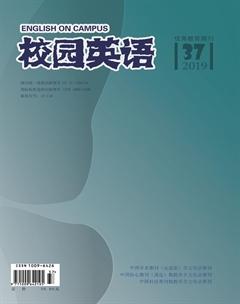Personal Deixis in English News Headlines
【Abstract】News headline is an important part of news discourse, and a symbol to premise the success of news production. In English news and headlines, deixis are widely used, illustrating the close relationship between language and the context. This article explains the main forms of personal deixis used in English news headlines and their pragmatic functions.
【Key words】Personal Deixis; News Headlines
【作者簡介】杨康,华中师范大学。
There are various forms of personal deixis in news headlines, such as personal pronouns, personal names, short or long deterministic descriptions, etc. The same referential object can be expressed in different forms at length and complexity.
Zero signified reference, personal consistent reference, personal pronoun reference can be regarded as “high accessibility level deixis”; the modifier, first name, last name and short deterministic descriptive reference of proximal deixis “medium accessibility level deixis” and long definite descriptive deixis; full name and full name modifier can be divided into “low accessibility level deixis”.
In English news headlines, personal pronouns and personal consistent deixis are used more frequently than nouns, and proper nouns or modified nouns. High accessibility level deixis abound in English news headlines to provide the reader with enough information.
Eg. 1 Why We can?t Spend Our Way Back To Normal? (Time)
2 Does Fatherhood Make You Healthy? (Newsweek)
3 Can Paul Ryan Dodge the Friendly Fire? (Newsweek)
4 Global Trade Talks Threaten Obamas Longtime Balancing Act (The New York Times)
In the newspaper headlines, mainly middle accessibility level deixis are used with personal pronouns used more frequently, as in example 1and2. The use of personal pronouns can shorten relate journalists and news audiences.
Peoples names are written in full names(eg.3). If the reference is made to a well-known head of State or leader, etc, the reference is only by a family name, as in example 4. In this news context, there is no need for a more complex full name.
Eg.5 Canoe coach Henze dies after car crash (Aug. 16,2016 BBC homepage)
Stefan Henze: Germany canoe slalom coach dies following car crash (web page)
There are similarities between website headlines and newspaper headlines. They should follow the principle of simplicity of information, and mainly use medium accessibility referential language, but the website news title based on the network platform has its difference. The headlines of English websites are often inconsistent with those of related pages. The personal deixis in the news headlines and related web titles of the website often change between different forms of accessibility(eg.5).
Eg.6 Trump: Ill ‘change tone if elected (July22,2015 CNN)
7 Arbitration body has nothing to do? with us, says UN (July 13,2016 China daily)
The personal indication in news headlines usually refers directly or indirectly to the words of the news parties or the subjects interviewed in the news reports. Therefore, the news audience can easily understand the denotations of these people from the news headlines. In example 6, the term “I” refers to Trump, the subject of news coverage. In example 7, this news report is a UN statement: the South China Sea Arbitration Tribunal has nothing to do with us. The first-person plural “We” does not include journalists or news audiences. “We” refers to the United Nations. The pragmatic purpose of direct or indirect citation is to strengthen the credibility of news, to create a vivid news context, to make the news audience appear to be able to come to the news scene, to strengthen the appeal of news, and to make news more objective.
The pragmatic functions of using different forms of person deixis in English news headlines are to attract the attention of the news audience, shorten the psychological distance between the news spokesman and the news audience, and improve the readability of the news. Language is formed on the basis of the interactive experience and cognitive processing of the real world. The existence of personal deixis in English news headlines also reflects this interactive experience. It can also be said that the form of person deixis is related to specific context or news context. However, the conversion between the degree of accessibility of personal deixis in the headlines of news websites and their related pages is particularly worthy of further attention and research.
Reference:
[1]何兆熊.新編语用学概要[M].上海:上海外语教育出版社,1999: 56.

